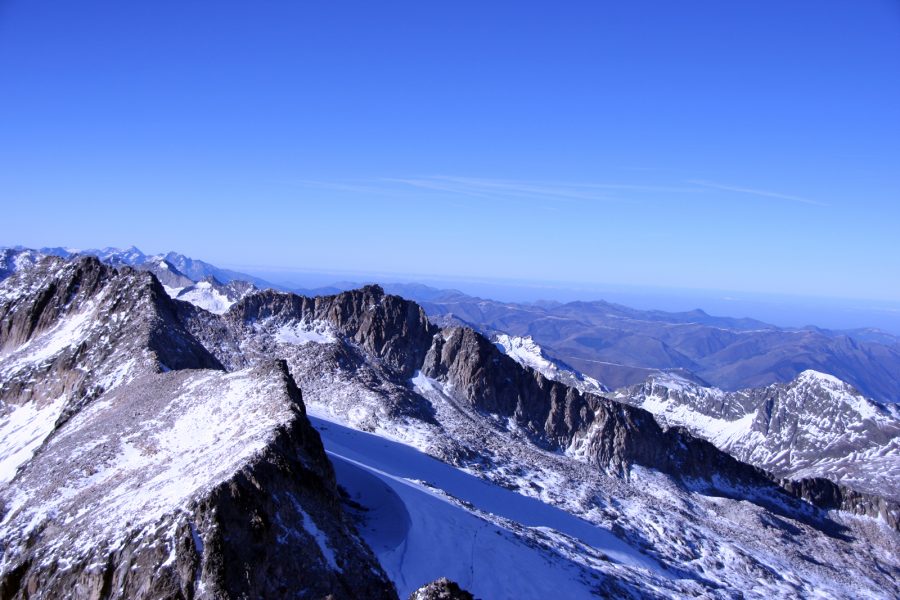HUESCA – The glaciers in the Pyrenees are proving to be shrinking at an alarming rate. In the past ten years, the glacier of the Pico de Aneto has lost 20 meters in thickness. This is shown by recent research by the IPE Pyrenees Research Institute and the University of the Basque Country.
The only glaciers you can still find in Spain today are in the Pyrenees. They are the largest glaciers in Southern Europe, but they are all becoming extinct. In 1850 there were 52 glaciers in the Pyrenees; in 2020 there will be only 19 left. Over the past ten years, these glaciers lost 63 hectares of ice, which is roughly the size of 126 football fields. These glaciers in Spain are expected to die in the next ten years and disappear completely within thirty years.
What is a glacier anyway?
A glacier is an ice river that flows slowly down all year round. A glacier moves a few centimeters a day. To grow, snow must fall on the glacier, which can turn to ice the following year. But not a single glacier has grown in the Pyrenees in the last 70 years. Due to the high temperature, not much snow remains that can become ice the following year. The temperature on the peaks in the mountains is rising twice as much as the average temperature increase on Earth.
Glaciers are disappearing worldwide
To stop the glaciers in Spain from shrinking, low temperatures need to occur continuously for ten years. With the current temperature rises, the Spanish glaciers will disappear. Even when the temperature stopped rising, the glaciers continue to melt. Not only in the Pyrenees, but all over Europe, Asia and America the vast majority of glaciers are disappearing. The United Nations climate panel reported this in their latest report.
New mountain lakes
Many glaciers turn into mountain lakes. In the far north of the glacier of the highest mountain in the Pyrenees, Pico d’Aneto (3.404m), a new lake appeared. That lake is so young that it does not yet have a name. It lies at an altitude of almost 3,200 meters and is the youngest and the highest lake in the Pyrenees. “We are investigating how long the soil will need to develop a new ecosystem after the ice retreat,” said IPE geologist Ixeia Vidaller. “We want to investigate these glaciers to the end. We think we have a few more years of work here to document how a glacier behaves in its final stage. It’s a foretaste of what will happen in other mountain ranges around the world, “concludes research leader Nacho López-Moreno.
The Spanish newspaper El País published the first results of the research by IPE and the Basque University. On the website of El País you can view maps of the disappeared and remaining ice masses in the Spanish Pyrenees and watch videos of the researchers in action.


